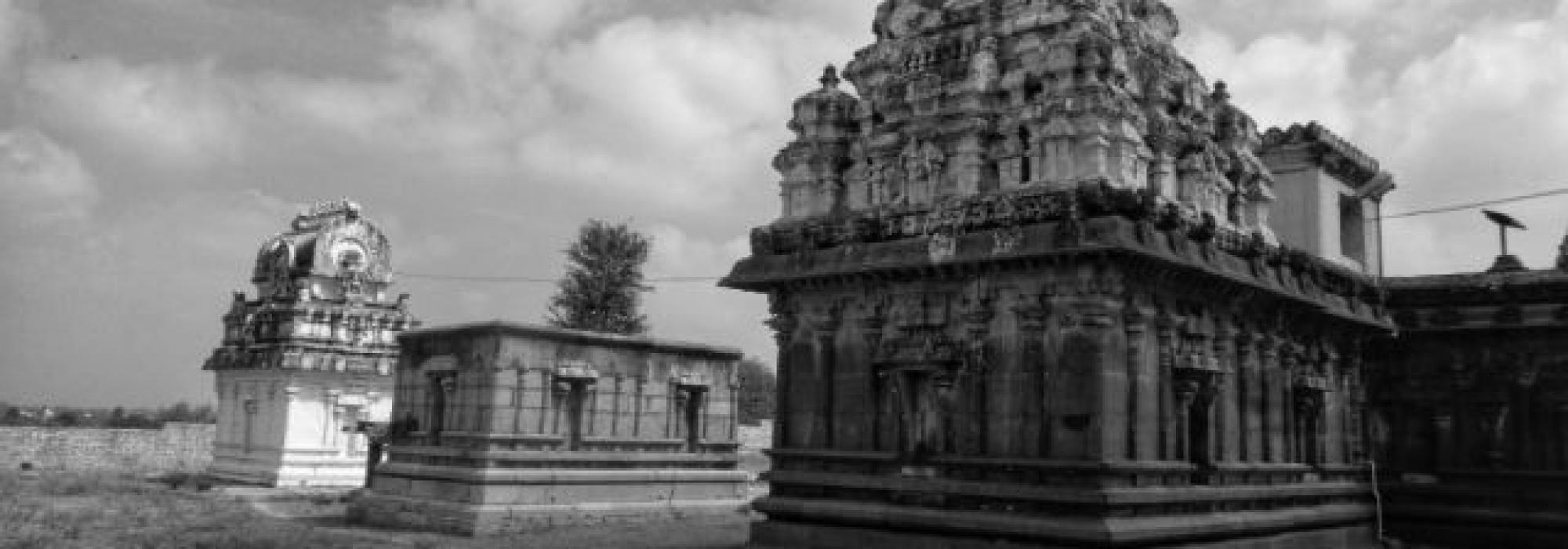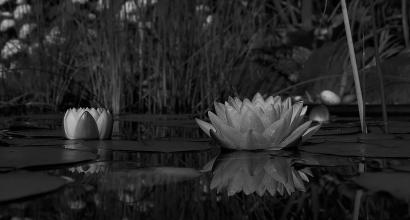The storage of the genealogical records and investing in their maintenance are the things that have barely captured the emphasis of our folk. On the contrary, the European world seems to have taken some interest at least, in this regard, such as, the devoted maintenance of a record for every child that is baptised in the community, including the date of birth and the parental information of the infant. Apart from this, the customary recording of the diary entries and routinary whereabouts, provide us with generous amounts of information. The sustained habit of organizing the postal letters is another striking example. A varied set of such records have a notable role to play in the historical analysis of a family, thereby adding to the analysis of a bygone era of nation, in speckbits, if not by and large. These, indeed, are laudable customs, waiting to be adapted by our people, which when modified to suit the limits of our families, such as reducing the key events within our families into textual format, could help the future generations in studying their ancestors, to a large extent.
Day to Day
I have only been blessed with ancestral information which is oral in form, and not textual, gained through the regular interactions with my elders.
None among my forerunners, as far as I can behold, seem to have achieved anything exemplary. Nor have I come across any such ancestor of mine to have been a proficient scholar, a minister, a commander or even an office bearer. There were zero lion hearts among them. Riches do not seem to have been their cup of tea at all. I find none among them to have possessed either of charitable or sagely outlook. In short, all of them were mere men. Simple, ordinary and among the commonest of the commoners. They were just as unassuming as any other men, to whom, the earning of their daily bread, was no less in comparison to any stupendous feat. They seem to have survived on whatever little they could to gain, as they could not afford to complain. They lived, sans any higher goals, fathered more men, observed the regular rites and rituals, merried during the weddings and carnivals, staying well within the boundaries of their statuses, and on one fine day - died, like most other men do. And thus, I'm left with nothing that would let me feel proud about my forebears.
Humility
Humility, according to my presumption, had been their foremost quality. They were well aware of their limits and never sought to impertinence. They remained in accordance with the proverbial statement – ಬಡವ ನೀ ಮಡಗಿದ ಹಾಗಿರು (Pauper Lad! Cross not thy limits, Good or Bad).
The selfsame humility could've had its fair share of role in their abstinence from recording the family history. Also, the realities of their lives were harsh enough to keep them away from settling down and peacefully jotting down their life events at the pace of their memories. They were strugglers of life and their gastronomical needs were all that ever mattered to them. As a matter of fact, the common folk find writing, which demands both time and peace of mind, to be an uphill task. With the hunger being a better reality, from where would one even gather adequate time to enjoy the luxury of penning down family histories? Therefore, it was quite natural for my ancestors to have lacked the right enthusiasm to textualize our family history.
The Common
A thorough contemplation, however, reveals that their lack of writing skills has not much to contribute to the loss of, say, any kind. That the genealogy is an inevitable raw material to the study of the national history, is an agreed statement. But, let us try to have a rather different look at it – Assume every single person among the masses penning a history of his forebears on his own. For the starters, would such a thing be feasible? If so, would it be reasonable enough to expect a collector and a reader community for this literary colosseum? Only the history of a family or two are significant enough to find a place in the national history, among the thousands. The remaining heap is what it is – stacked up one over the other and barely worthwhile. If it's ragi balls and broth at Rāmaṇṇa's, then the situation is no different at Bhīmaṇṇa's or even Śamaṇṇa's; Well, gravy may replace the broth, but the ragi balls are common, just like my forefathers.
Thus, I begin with the tale of my ancestors.
The story of my forefathers dates back to my great grandfather, Shekdar Gundappa. All the things I know, only succeed him, for I do not know of anyone alive who could recount the stories that predate him.
The Dravidians
A conglomeration of various houses sum up to form the Dravidian Brāhmaṇa community - the Vaḍamas, the Vādyamas, the Bṛhaccaraṇas, the Aṣṭasahasras, and so on. The Bṛhaccaraṇa house itself houses many sub-groups, namely, the Kaṇḍramāṇikkyas, the Paḷamānūrs, the Aravadaḷas, the Moḷanāḍus, the Mañjāputtūrs, the Tiruvaṇṇāmalais, and the list continues. Sir K Śeṣādri Iyer, the Dewan of Mysore, is a Kaṇḍramāṇikkya. Kaṇḍramāṇikkya is and Agrahāram or a Brāhmaṇa village. Dharmarājādhvari, the author of the famed Vedāntaparibhāṣā was a Kaṇḍramāṇikkya too. Chandraśekhar Iyer, who was the Chief Justice of Mysore, belonged to the Paḷamānūr group of the house Bṛhaccaraṇa. Sir P Śivasvāmi Iyer is a Moḷanāḍu Bṛhaccaraṇa. As for us, we are the Mañjāputtūr Bṛhaccaraṇas, categorically.
Mañjāputtūr
The term Mañjā is said to be closely associated with Sanskrit term Muñjā. The Kannada term Muñji too has originated from the same. Muñjā refers to a type of Kuśa grass, which is used to spool out the Mauñjī, or the ceremonial string of Muñjā grass, which is fastened around the waist of the vaṭu during Upanayanam, or the Holy threading ceremony. Termed as Mekhalā in Sanskrit and Uḍudāra in Kannada, the Mauñjī, celebrated during the Upanayanam, was once the proud possession of females too, when they too underwent the same ritual.
Howbeit, Mañjāputtūr, was a village subscribing to the Vedic way of life, inclusive of all its rites and rituals, and most importantly, associated with the Kuśa grass. Mañjā, referring to the Kuśa grass and puttu, referring to the anthills, have constituted to form the nomenclature of Mañjāputtūr, indicating the presence of both, in and around the place. The village of Mañjāputtūr lies off Tirucināppaḷḷi, falling somewhere between Tirucināpaḷḷi and Siddarkōvil. It was once an Agrahāram, belonging to the Brāhmaṇas of the Vedic order. Atleast for now, it's a village, housing around forty five odd families.
The search of a livelihood made the residing Brāhmaṇas to walk away from the village.
The Bṛhaccaraṇas, formerly known as the Bṛhadācaraṇas[1], due to their involvement in extensive rituals, were steadfast loyalists to the Yājñic[2] rites. A few of them were even known for their scholastic excellence in the Vedas and various other Śāstras such as the Mīmāṃsas[3] and were authors too.
The Quest for Livelihood
I would probable the migration of my predecessors to the Mysore region, to the 14th century CE, which is, around 600 years from now. The search of livelihood must've been the primary cause of their migration. It is however a story of the Vijayanagara times, sometime post its successful establishment. The then Brāhmaṇas must've been vagabonds, meandering hither and tither, sans any land possessions. The Mañjāputturs were among such men.
A few of them made it to the Mysore region via the district of Coimbatore and a few others migrated via Sarjapura and Ānekal villages of the Bangalore district. The remaining ones probably chose to settle down in the villages en route. Gummaḷāpura, near Ānekal, was one such village of their settlement. The then Gummaḷāpura appears to be a hub of the savants of Kannaḍa literature and also the Vīrashaivaites. The ramparts of numerous monasteries and Shaivaite temples have spread across its geography.
Vēṅkaṭaśarma was one of its residents hailing from the same House as mine. The illustrious scholar, Mahāmahōpādhyāya Rā. Narasimhācārya, hailed as Prāktanavimarśavicakṣaṇa, has mentioned that the selfsame Vēṅkaṭaśarma has authored a description for the Jagannāthavijaya of Rudrabhaṭṭa.
To be continued...
This is the first part of a three-part English translation of the first essay in D V Gundappa’s magnum-opus Jnapakachitrashaale (Volume 8) – Sankeerna-Samputa. Edited by Arjun Bharadwaj.
Footnotes
[1] Those who are involved in extensive rituals
[2] Related to Yajñas
[3] School of Indian philosophy dealing with the hermeneutics of the Vedas







































